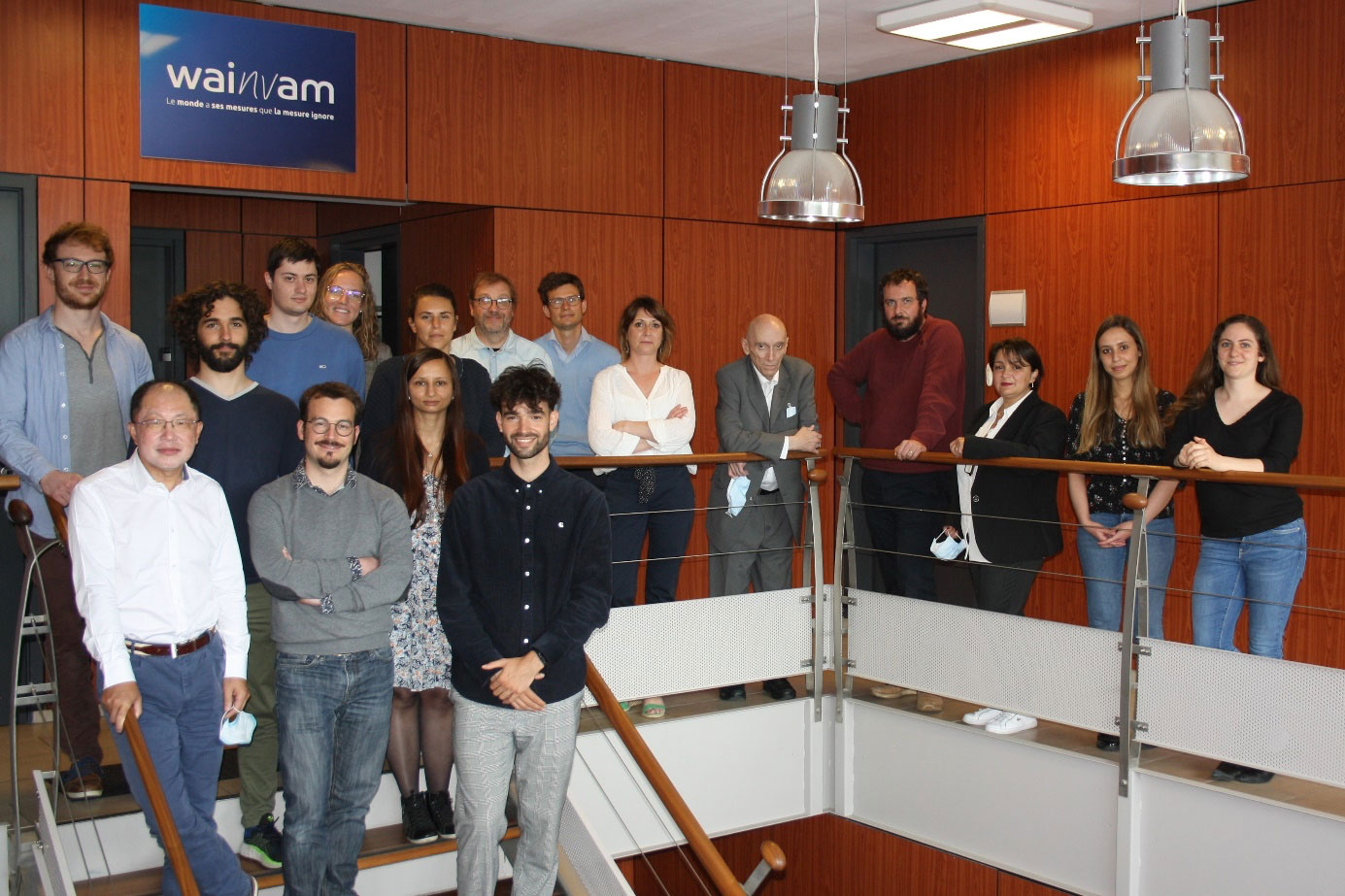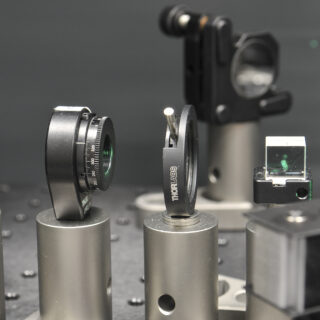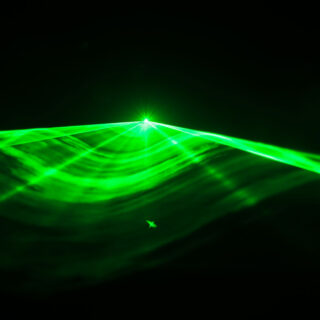
WAINVAM-E’s team, in its premises, in Soye, Plœmeur. | OUEST-FRANCE
Ouest-France Published on 11/08/2021 at 09h00
The start-up WAINVAM-E was created in April 2020, in Soye, Plœmeur (Morbihan). It was born from the meeting of Claude Barraud, former president of the company Thalos, and Remi Geiger, an expert in quantum sensors and metrology. The company has two other founders: Michel Feret, a doctor in artificial intelligence who has made his career in telecoms and consumer electronics, and Jianguo Zhang, a doctor in electrochemistry and former senior vice-president in charge of patents and licenses at Thomson/Technicolor. Today, nineteen people with different backgrounds, cultures and experience are building the future of this company every day.
Specialized in quantum sensors
The start-up develops quantum sensors, which measure infinitesimal variations of magnetic fields. They detect defects in metal parts that were undetectable until now. These sensors have the advantage of being small in size, and can therefore be adapted to places that are difficult to access, as well as to complex conditions: high temperatures, high pressures, strong vibrations and radiation.
The company is, for the moment, self-financed by its creators to the tune of 1.8 million euros.
“We are also supported by the Banque Populaire Grand Ouest (BPGO) and by several individual business angels,” explain the founders. “We are currently preparing to raise funds for 2022.”
Several products created by the company
The first product offered by WAINVAM-E is an ultra-sensitive magnetic field sensor: a magnetometer that can be integrated into many systems where magnetometry provides very high value-added information. For example, for non-destructive testing solutions, to characterize wear or corrosion of metallic materials in the energy, nuclear, aeronautical, or naval sectors.
The company’s other product, a magnetic field imager, coupled with data inversion algorithms, will enable the characterization, at the micrometer scale, of power electronics circuits and magnetic wires for information storage.
In the long term, WAINVAM-E is also targeting medical imaging applications such as magnetoencephalography (brain activity imaging), magnetocardiography (heart imaging) and magneto-myography (muscle imaging).
Expert in non-destructive testing
The company is the winner of the i-Lab 2021 innovation competition. The results of the 23rd edition of this competition, organized by the Ministry of Higher Education, Research and Innovation, in partnership with BPIfrance, were unveiled last July.
“The i-Lab competition promotes the creation and development of innovative companies born of advances in cutting-edge French research with a high technological content” explains WAINVAM-E. “It is a quality label unanimously recognized by European investors. i-Lab is financing our non-destructive testing (NDT) project, which has a budget of 1 million euros.”
WAINVAM-E won in the “Electronics, signal processing and instrumentation” category, and more specifically for its MAGDAL-CND project – Nitrogen-Vacancy centers in diamond magnetometers for non-destructive testing.
Non-destructive testing (NDT) is the set of non-destructive methods used to characterize the internal and external state of sensitive elements, to verify the integrity of structures or materials without damaging them, and to measure the location of any defects.
“The applications in non-destructive testing (NDT) are numerous and have very high added value. In the Oil & Gas sector, we can extend the life of oil wells and guarantee wider safety margins, particularly environmental margins, than today. In the nuclear sector, we propose sensors that will improve measurement accuracy: they are easier to implement than traditional testing techniques, and can work in difficult radioactive conditions. In aeronautics, we can facilitate the inspection of metal structures (wings, fuselages, tanks), making them more accurate, and thus reducing their costs. In navigation, our sensors allow us to build autonomous navigation systems (without satellite), which can be used in submarines, on boats, or in airplanes. These systems are non-detectable and non-hackable. Eventually, these sensors could also be used in medical imaging, particularly in magnetoencephalography.”






















